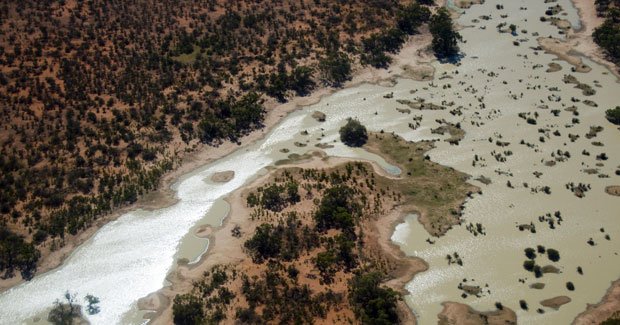Waterbirds of the Murray-Darling threatened by reduced water flow

A THIRTY YEAR STUDY OF the wetlands in eastern Australia has revealed that the construction of dams and diversion of water from the Murray-Darling Basin has resulted in a 70 per cent decline in the waterbird population in this area.
The study conducted by the University of New South Wales will have implications for government plans to establish irrigation in other parts of Australia, as researchers found that reduced water flow was the primary reason for reduced populations of pelicans, black swans, duck species and shorebirds.
“This study rings alarm bells for the Australian and Queensland governments currently pushing to establish irrigation in Northern Australia. Clearly, the building of dams and diversion of water will devastate our tropical wetlands, which are so important for the many ecosystem services they provide, including to future tourism and Aboriginal communities,” said Richard Kingsford, Director of the UNSW Centre for Ecosystem Science.

The Paroo River, in the Murray-Darling River Basin. (Image credit: Andrew Gregory)
Over a thirty year period the team of researchers conducted aerial surveys of waterbirds in areas covering a third of the continent. The study found that Lake Eyre Basin showed no signs of degradation, which is relatively undeveloped in comparison to the Murray-Darling Basin that has over 240 dams, which store 30 000 gigalitres of water.
The researchers also found that increased environmental flows could recover 18 per cent of the waterbird population, but that this number could be drastically reduced to 1 per cent because the Murray-Darling Basin plan doesn’t account for the effects of climate change.
Richard says that the ongoing construction of dams and the continual diversion of water from the Murray-Darling Basin would speed up negative environmental impacts. “The importance of environmental flows for the rivers and wetlands of the Murray-Darling Basin cannot be underestimated; they are critical for such wetlands as the Macquarie Marshes where we have international responsibilities,” he added.
The research was oringinally published in the journal Global Change Biology.
READ MORE:




